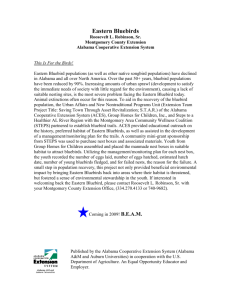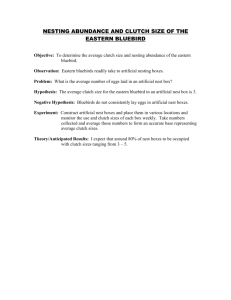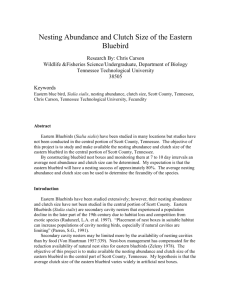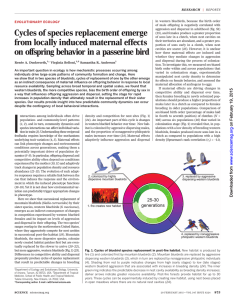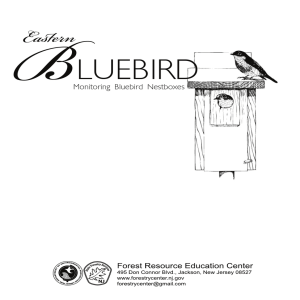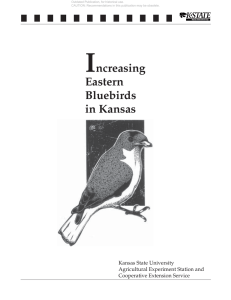Bluebird Nest Box Information
advertisement
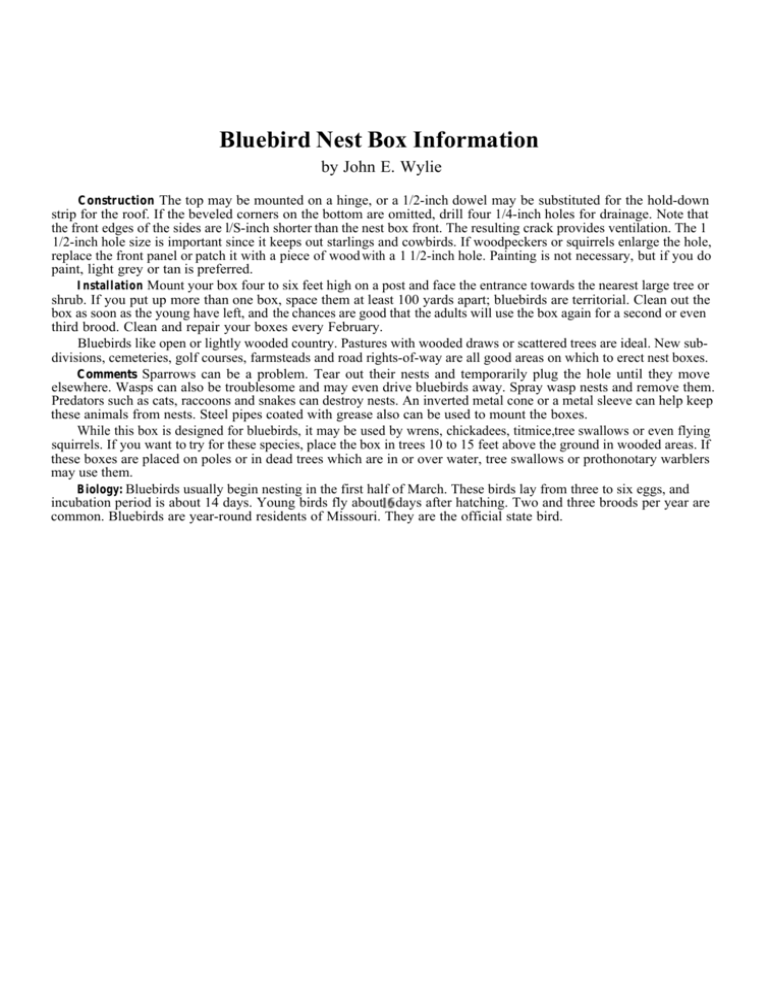
Bluebird Nest Box Information by John E. Wylie Construction The top may be mounted on a hinge, or a 1/2-inch dowel may be substituted for the hold-down strip for the roof. If the beveled corners on the bottom are omitted, drill four 1/4-inch holes for drainage. Note that the front edges of the sides are l/S-inch shorter than the nest box front. The resulting crack provides ventilation. The 1 1/2-inch hole size is important since it keeps out starlings and cowbirds. If woodpeckers or squirrels enlarge the hole, replace the front panel or patch it with a piece of wood with a 1 1/2-inch hole. Painting is not necessary, but if you do paint, light grey or tan is preferred. Installation Mount your box four to six feet high on a post and face the entrance towards the nearest large tree or shrub. If you put up more than one box, space them at least 100 yards apart; bluebirds are territorial. Clean out the box as soon as the young have left, and the chances are good that the adults will use the box again for a second or even third brood. Clean and repair your boxes every February. Bluebirds like open or lightly wooded country. Pastures with wooded draws or scattered trees are ideal. New subdivisions, cemeteries, golf courses, farmsteads and road rights-of-way are all good areas on which to erect nest boxes. Comments Sparrows can be a problem. Tear out their nests and temporarily plug the hole until they move elsewhere. Wasps can also be troublesome and may even drive bluebirds away. Spray wasp nests and remove them. Predators such as cats, raccoons and snakes can destroy nests. An inverted metal cone or a metal sleeve can help keep these animals from nests. Steel pipes coated with grease also can be used to mount the boxes. While this box is designed for bluebirds, it may be used by wrens, chickadees, titmice,tree swallows or even flying squirrels. If you want to try for these species, place the box in trees 10 to 15 feet above the ground in wooded areas. If these boxes are placed on poles or in dead trees which are in or over water, tree swallows or prothonotary warblers may use them. Biology: Bluebirds usually begin nesting in the first half of March. These birds lay from three to six eggs, and incubation period is about 14 days. Young birds fly about 1 days after hatching. Two and three broods per year are common. Bluebirds are year-round residents of Missouri. They are the official state bird.
